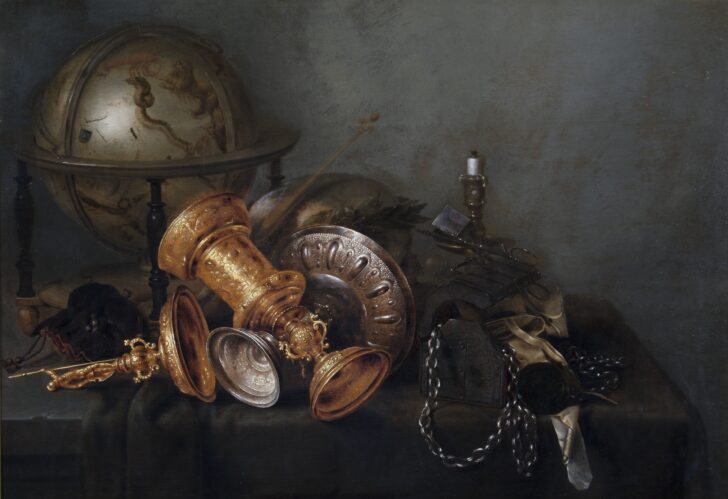Vanitas (Still Life), with globe, skull, candle, tazza, and covered cup
Willem Claesz Heda

Description
Subject Matter:
Many of the objects crowded on the tabletop in this masterful painting--the empty cups laying on their sides, the globe with figures of the zodiac, the skull, the extinguished candle--evoke the passage of time and the transience of human life. This type of painting, known as a vanitas still life, became popular in the Netherlands during the seventeenth century, and Heda, who worked in the city of Haarlem, was one of its most renowned practitioners. The admonition against finding security in life and its comforts, however, is counterbalanced in the painting by the delight in the objects tantalizingly arranged along the edge of the table and Heda's skill in rendering their sensuous qualities such as the glint of precious metal and the cool weight of the chain against the velvety tablecover.
Physical Description:
This remarkable still life depicts a table crowded with, among other things, a gilded covered goblet, a wide saucer-shaped silver tazza, a celestial globe painted with images of the constellations, a skull wearing a laurel wreath, and an extinguished candle, all rendered in exquisite detail with careful attention paid to the effects of light and texture. While the arrangement of objects may appear casual, the composition is artfully balanced along two diagonal axes centered on the two cups that lie crossed on the table. The repetition of ovoid shapes throughout the painting and the monochrome tonality with its restricted range of hues and values, a hallmark of Heda's style, assures the seamless integration of the sundry objects into a unified whole.
Usage Rights:
If you are interested in using an image for a publication, please visit https://umma.umich.edu/request-image/ for more information and to fill out the online Image Rights and Reproductions Request Form.